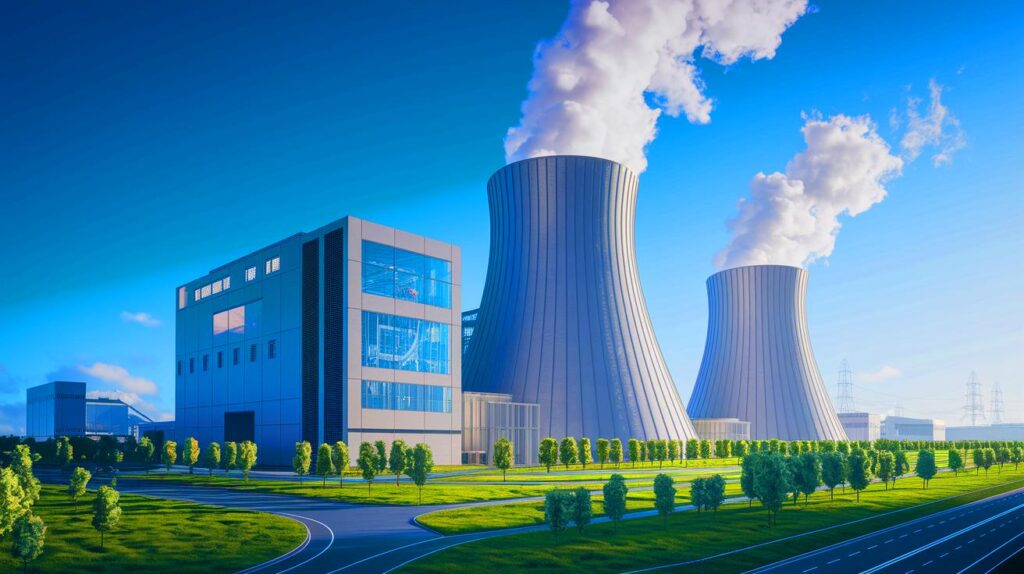| IN BRIEF |
|
As China continues its rapid industrial growth, the development of nuclear energy becomes increasingly crucial to meet its rising energy needs. The Zhangzhou nuclear power project, located in Fujian province, has recently reached a significant milestone with the successful completion of the hot functional test of its second unit. This achievement paves the way for fuel loading and its eventual integration into the national grid. The ongoing progress at this plant signifies China’s commitment to advancing its nuclear technology while reducing carbon emissions. With its potential to transform the energy landscape, the Zhangzhou project is a key element in China’s long-term strategy for sustainable energy production.
Progress in Nuclear Technology
The Zhangzhou nuclear power plant is home to the Hualong-1 reactor, an exemplary model of third-generation nuclear technology. This reactor highlights China’s technological prowess in developing advanced and indigenous energy solutions to meet its growing energy demands. Owned by CNNC-Guodian Zhangzhou Energy Company, a joint venture between CNNC and China Guodian Corporation, the Hualong-1 is a three-loop pressurized water reactor design. It combines features from CNNC’s ACP1000 and CGN’s ACPR1000+ models, representing a significant advancement in reactor design.
According to Mei Bingyun, chief engineer at CNNC Zhangzhou Energy Co., Ltd., the completion of the hot functional test is a critical milestone. “We will proceed with fuel loading and the grid connection as planned,” Mei states. The second unit is expected to enter commercial operation by the fourth quarter of the year, aligning with the plant’s strategic goal of creating a large-scale energy hub with six nuclear production units, each with a capacity of approximately one million kilowatts.
Economic and Environmental Impact
The Zhangzhou nuclear power plant is not only a technological marvel but also a pillar of China’s economic and environmental strategy. Once fully operational, it will have an installed capacity of about 7.2 million kilowatts. Each reactor is expected to generate over 10 billion kilowatt-hours of clean electricity annually. This production can meet the annual electricity needs of one million people in moderately developed countries, underscoring the plant’s potential impact on energy security.
Furthermore, the plant is set to reduce standard coal usage by 3.12 million tons and cut carbon dioxide emissions by 8.16 million tons each year, which is equivalent to planting over 70 million trees. This underscores the pivotal role of the plant in supporting China’s transition to low-carbon energy. By reducing emissions and meeting the country’s growing energy needs with reliable and sustainable sources, the Zhangzhou project significantly contributes to China’s environmental goals.
Global Competitiveness and Future Perspectives
The Hualong-1 reactor has become the most widely deployed third-generation nuclear technology in the world, both in operation and under construction. This achievement marks China’s rise in the field of nuclear technology and global competitiveness. As the world seeks sustainable energy solutions, China’s advancements in nuclear technology serve as a model for other nations to emulate.
Looking ahead, China aims to double its nuclear energy share from the current 5% to 10% by 2035, and further to 18% by 2060. These ambitious goals reflect the country’s commitment to expanding its nuclear capabilities and reducing its reliance on fossil fuels. With projects like Zhangzhou at the forefront, China is well-positioned to lead the global transition to clean energy.
Challenges and Opportunities
Despite its promising outlook, the Zhangzhou nuclear power plant faces several challenges that could impact its long-term success. These include regulatory hurdles, public perceptions of nuclear safety, and geopolitical tensions. However, the potential benefits of the project far outweigh these challenges. By demonstrating its ability to produce clean and reliable energy, the Zhangzhou plant can help shift public opinion in favor of nuclear energy as a viable alternative to fossil fuels.
Moreover, the success of the plant could open doors for international collaboration and investment in China’s nuclear industry. As other countries seek to develop their nuclear capabilities, China’s expertise and experience with projects like Zhangzhou could serve as valuable resources, fostering stronger international partnerships and contributing to global efforts to combat climate change.
As China continues to innovate and expand its nuclear capabilities, the Zhangzhou nuclear power plant stands as a beacon of progress and potential. Its successful operation could redefine the energy landscape in China and beyond, providing a sustainable solution to the world’s growing energy challenges. How will China navigate the complexities of nuclear energy to achieve its ambitious energy and environmental goals?







